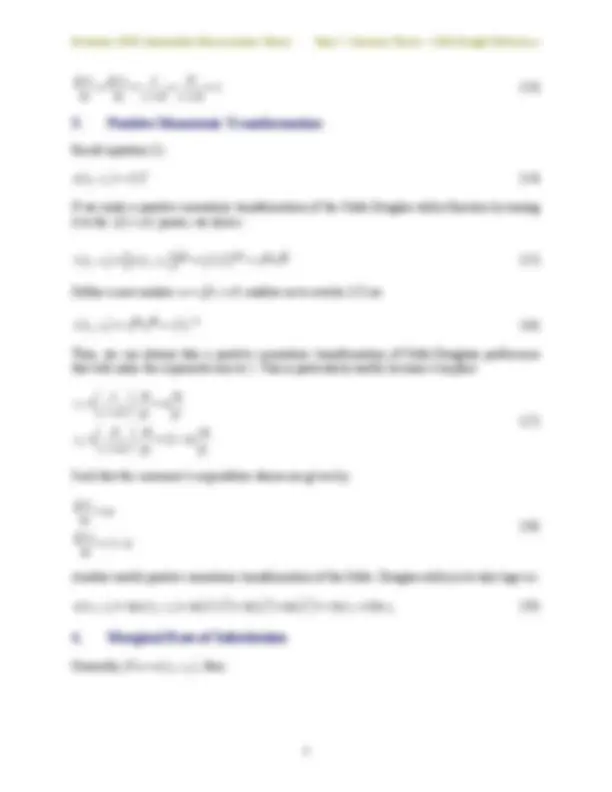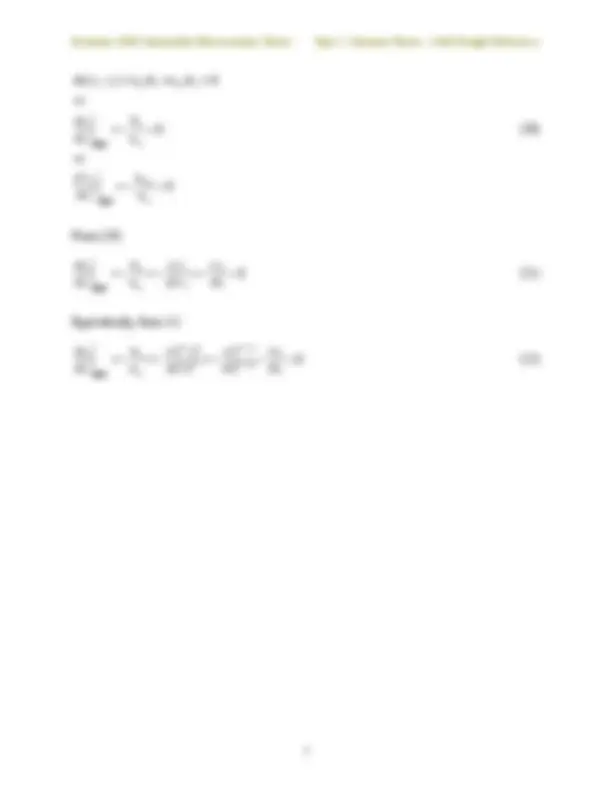





Study with the several resources on Docsity

Earn points by helping other students or get them with a premium plan


Prepare for your exams
Study with the several resources on Docsity

Earn points to download
Earn points by helping other students or get them with a premium plan
Community
Ask the community for help and clear up your study doubts
Discover the best universities in your country according to Docsity users
Free resources
Download our free guides on studying techniques, anxiety management strategies, and thesis advice from Docsity tutors
Cobb-Douglass preferences are one of the simplest algebraic representations of well-behaved preferences. Dividing (4) by (5): 1 See the Appendix to Chapter 4 ...
Typology: Lecture notes
1 / 5

This page cannot be seen from the preview
Don't miss anything!




Cobb-Douglas Preferences
Reference: Varian, p.
Outline: 1. Introduction
_2. Cobb-Douglass Preferences
Cobb-Douglass preferences are one of the simplest algebraic representations of well-behaved
preferences.
Assume the consumer’s utility function is given by:
u x 1
, x 2 ( ) =^ x 1
c x 1
d (1)
We will maximise this utility function subject to the following budget constraint:
p 1
x 1
x 2
= m (2)
Thus, setting up the Lagrange multiplier:
1
max
x 1 , x 2 , λ
L = x 1
c x 2
d
x 1
− p 2
x 2 ( ) (3)
∂ x 1
= cx 1
c − 1 x 2
d − λ p 1
∂ x 2
= dx 1
c x 2
d − 1 − λ p 2
∂ λ
= m − p 1
x 1
− p 2
x 2
Dividing (4) by (5):
1 See the Appendix to Chapter 4 of Varian for details.
cx 1
c − 1 x 2
d
dx 1
c x 2
d − 1
p 1
p 2
c
d
x 1
c − 1 − c x 2
p 1
p 2
c
d
x 2
x 1
p 1
p 2
x 1
c
d
p 2
p 1
⋅ x 2
Also note from (6) that:
x 2
m
p 2
p 1
p 2
x 1
We now have two equations - (7) and (8) – and two unknowns x 1
, x 2 ( ). Substituting (8) into (7)
implies:
x 1
c
d
p 2
p 1
x 2
x 1
c
d
p 2
p 1
m
p 2
p 1
p 2
x 1
x 1
c
d
m
p 1
c
d
⋅ x 1
x 1
c
d
c
d
m
p 1
x 1
d
c + d
c
d
m
p 1
x 1
c
c + d
m
p 1
p 1
x 1
m
p 2
x 2
m
c
c + d
d
c + d
Recall equation (1):
u x 1
, x 2
1
c x 1
d (14)
If we make a positive monotonic transformation of the Cobb-Douglas utility function by raising
v x 1
, x 2
1
, x 2
1
c + d = x 1
c x 1
d
1 c + d = x 1
c c + d x 1
d c + d (15)
v x 1
, x 2
1
c c + d x 1
d c + d = x 1
a x 1
1 − a (16)
Thus, we can always take a positive monotonic transformation of Cobb-Douglass preferences
that will make the exponents sum to 1. This is particularly useful, because it implies:
x 1
c
c + d
m
p 1
= a
m
p 1
x 2
d
c + d
m
p 2
m
p 2
Such that the consumer’s expenditure shares are given by:
p 1
x 1
m
= a
p 2
x 2
m
= 1 − a
Another useful positive monotonic transformation of the Cobb- Douglas utility is to take logs vis :
w x 1
, x 2
1
, x 2
1
c x 1
d
1
c
1
d
1
Generally, if u = u x 1
, x 2
du x 1
, x 2 ( ) =^ u x 1
dx 1
dx 2
dx 2
dx 1 MRS
u x 1
u x 2
d
2 x 2
dx 1
2
MRS
u x 1 x 1
u x 2
From (19):
dx 2
dx 1 MRS
u x 1
u x 2
c x 1
d x 2
cx 2
dx 1
Equivalently, from (1):
dx 2
dx 1 MRS
u x 1
u x 2
cx 1
c − 1 x 2
d
dx 1
c x 2
d − 1
cx 1
c − 1 − c
dx 2
d − 1 − d
cx 2
dx 1